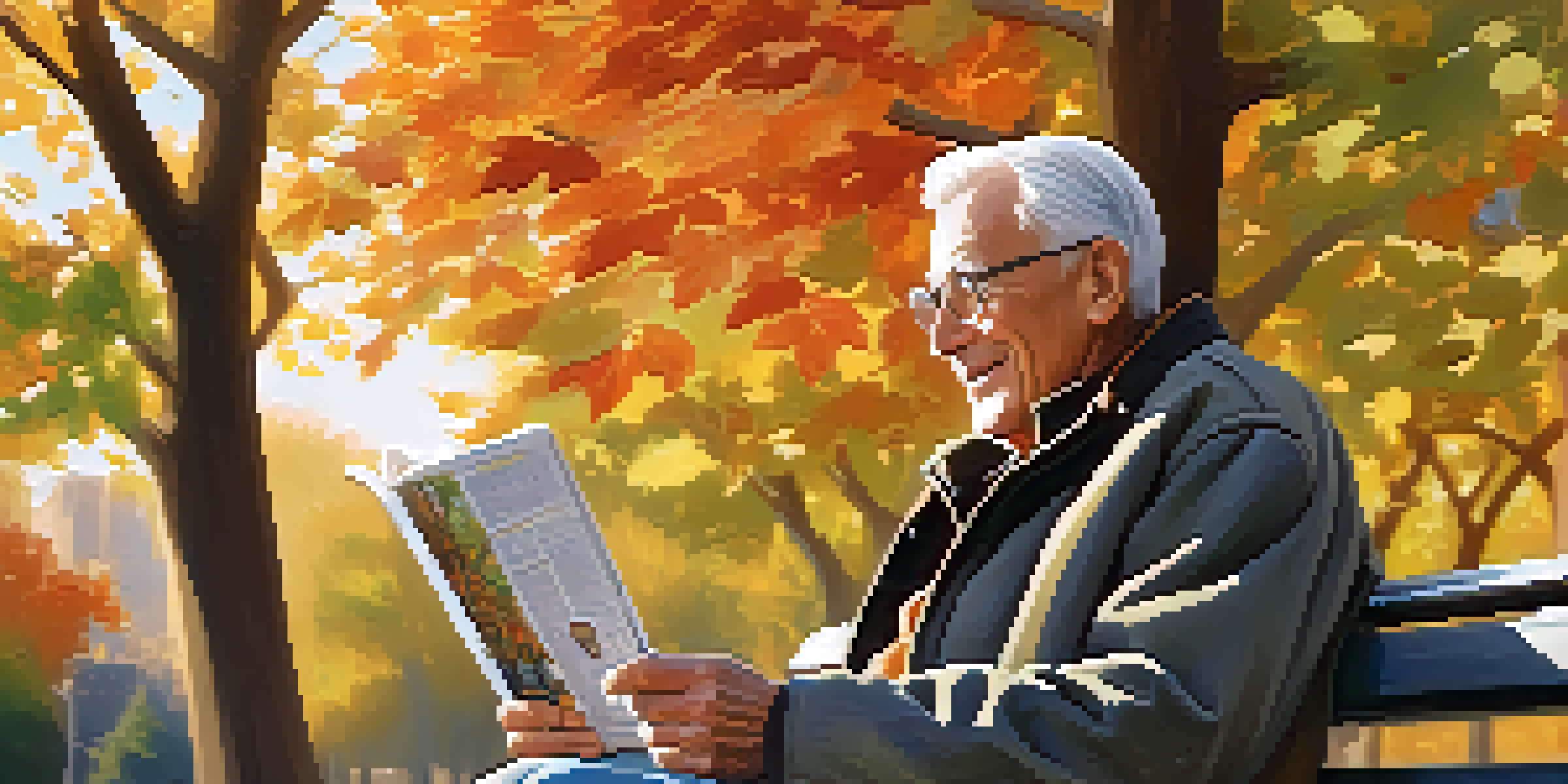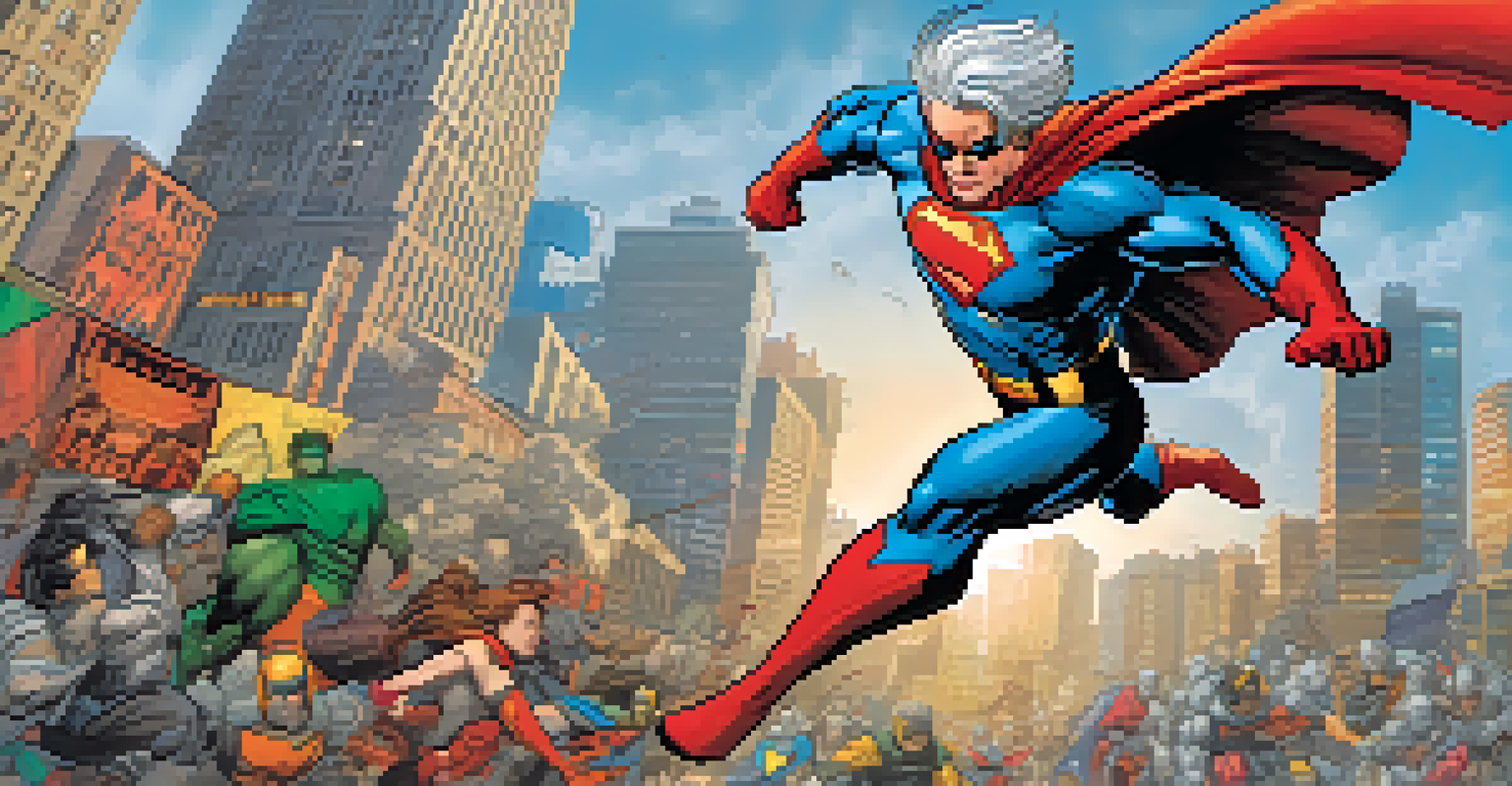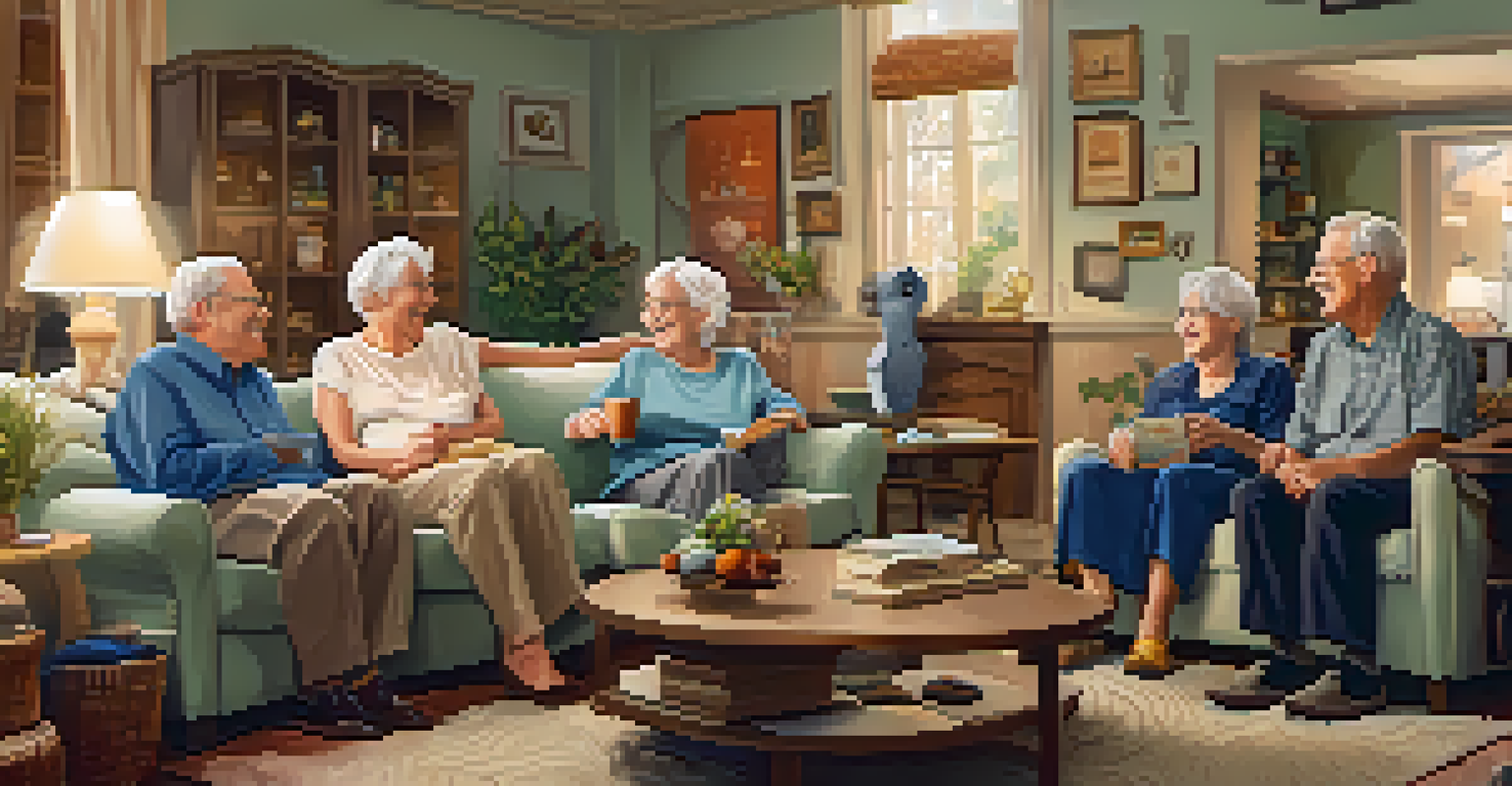The Aging Process in Graphic Novels and Comics

Understanding Aging in Graphic Novels and Comics
Aging is a universal experience, and graphic novels and comics often reflect this reality in unique ways. They delve into the complexities of growing older, showcasing both physical changes and emotional challenges. Through vibrant illustrations and engaging narratives, these mediums can convey the nuances of aging, making them relatable to readers of all ages.
Aging is an extraordinary process where you become the person you always should have been.
For instance, characters like Frank Miller's aging Batman in 'The Dark Knight Returns' illustrate how age can affect not just physical abilities, but also perspective and values. The visual representation of an older, more weathered hero resonates with readers who may see echoes of their own lives. This exploration captures the essence of aging in a manner that is both profound and accessible.
Furthermore, comics often use humor and satire to address the aging process, making it easier for readers to engage with serious topics. Whether it’s a lighthearted take on grandparenthood in a strip or a more serious reflection on mortality in a graphic novel, these narratives serve to normalize discussions about aging.
Character Development and Aging
In graphic novels and comics, character development is often intertwined with the aging process. Characters evolve not just in their abilities but also in their emotional and psychological landscapes as they age. This transformation can lead to rich storytelling opportunities, allowing readers to witness the growth and maturity of their favorite characters over time.

Take, for example, the character of Peter Parker in 'Spider-Man.' As he transitions from a teenage superhero to a more mature adult, readers experience his struggles and triumphs in a relatable way. This journey through time highlights the responsibilities and challenges that come with age, making readers reflect on their own life stages.
Aging Reflected in Comics
Graphic novels and comics uniquely depict the complexities of aging through vibrant illustrations and engaging narratives.
Moreover, aging can introduce new dynamics in relationships, such as mentorship or generational conflict. These themes add depth to the narrative, encouraging readers to think about how age affects their connections with others, making the story not just about the individual, but also about community and legacy.
Visual Representation of Aging
The visual aspect of graphic novels and comics plays a crucial role in depicting the aging process. Artists often use specific techniques to illustrate aging, such as altering characters' facial features, hair color, and posture. These visual cues are essential in conveying the passage of time and the physical changes that accompany it.
The greatest tragedy in mankind's entire history may be the hijacking of morality by religion.
For instance, the use of lines and shading can emphasize wrinkles or tired expressions, while color palettes may shift to reflect the mood associated with different life stages. This artistic approach not only enhances storytelling but also allows readers to engage with the emotional weight of aging visually.
Additionally, the contrast between youthful and aging characters can create striking visuals that highlight the theme of time. This juxtaposition encourages readers to reflect on their own experiences with aging, fostering a deeper connection to the characters and their journeys.
Themes of Mortality in Aging Narratives
Mortality is an inevitable aspect of aging, and many graphic novels and comics tackle this theme head-on. By confronting the realities of life and death, these stories can evoke powerful emotions and provoke thought. This exploration is often done in a way that respects both the weight of the subject and the sensitivity of the audience.
For example, works like 'Maus' and 'Persepolis' integrate personal histories with the broader narratives of loss and survival, illustrating how aging intersects with historical context. Such stories not only highlight the personal experience of aging but also connect it to larger societal issues, making the narrative resonate on multiple levels.
Character Growth and Aging
As characters age, their emotional and psychological development offers rich storytelling opportunities that resonate with readers.
Furthermore, the portrayal of grief and loss in aging narratives can lead to catharsis for readers. By seeing characters navigate these challenges, audiences may find solace in shared experiences, opening up conversations about mortality and the human condition.
Cultural Perspectives on Aging in Comics
Different cultures depict aging in diverse ways within graphic novels and comics, showcasing unique perspectives and traditions. These cultural lenses can influence how aging is portrayed, whether through respect for elders or the fear of growing old. Exploring these variations enriches our understanding of the aging process across different societies.
For instance, Japanese manga often highlight the wisdom and experience of older characters, portraying them as vital members of the community. In contrast, Western comics may focus more on the struggles and vulnerabilities associated with aging. This difference illustrates how cultural narratives shape our perceptions of the elderly and aging.
By examining these cultural representations, readers gain insight into the values and beliefs surrounding aging in various societies. This understanding fosters empathy and appreciation for the complexities of aging as seen through the lens of different cultures.
The Role of Humor in Aging Comics
Humor is a powerful tool in graphic novels and comics, especially when addressing the aging process. By using comedy, creators can tackle the sometimes heavy subject of aging in a light-hearted and engaging way. This approach not only entertains but also helps to ease the discomfort that often accompanies discussions about getting older.
Comics like 'The Old Man and the Sea' showcase how humor can normalize the aging experience, making it relatable for readers. Through witty dialogue and humorous situations, these narratives invite readers to reflect on their own lives while enjoying a good laugh.
Cultural Views on Aging
Different cultures portray aging differently in comics, providing valuable insights into societal attitudes and beliefs surrounding the elderly.
Moreover, humor can serve as a coping mechanism for both characters and readers. It allows for a shared experience of aging, reminding us that while the process can be challenging, it can also be filled with joy and laughter.
Future Trends in Aging Themes in Comics
As the world continues to evolve, so too will the portrayal of aging in graphic novels and comics. Trends are emerging that reflect changing societal attitudes toward aging, emphasizing inclusivity and representation. This shift opens up new storytelling possibilities, allowing for more diverse experiences to be shared.
For instance, there’s a growing emphasis on stories that feature older protagonists or focus on the lives of senior citizens. This trend highlights the importance of representing aging in a way that resonates with contemporary audiences, encouraging acceptance and understanding of the aging process.

Additionally, the rise of digital comics is fostering innovative storytelling methods, allowing creators to explore aging themes in new formats. As technology advances, the potential for unique narratives about aging is limitless, paving the way for a richer exploration of this universal experience.